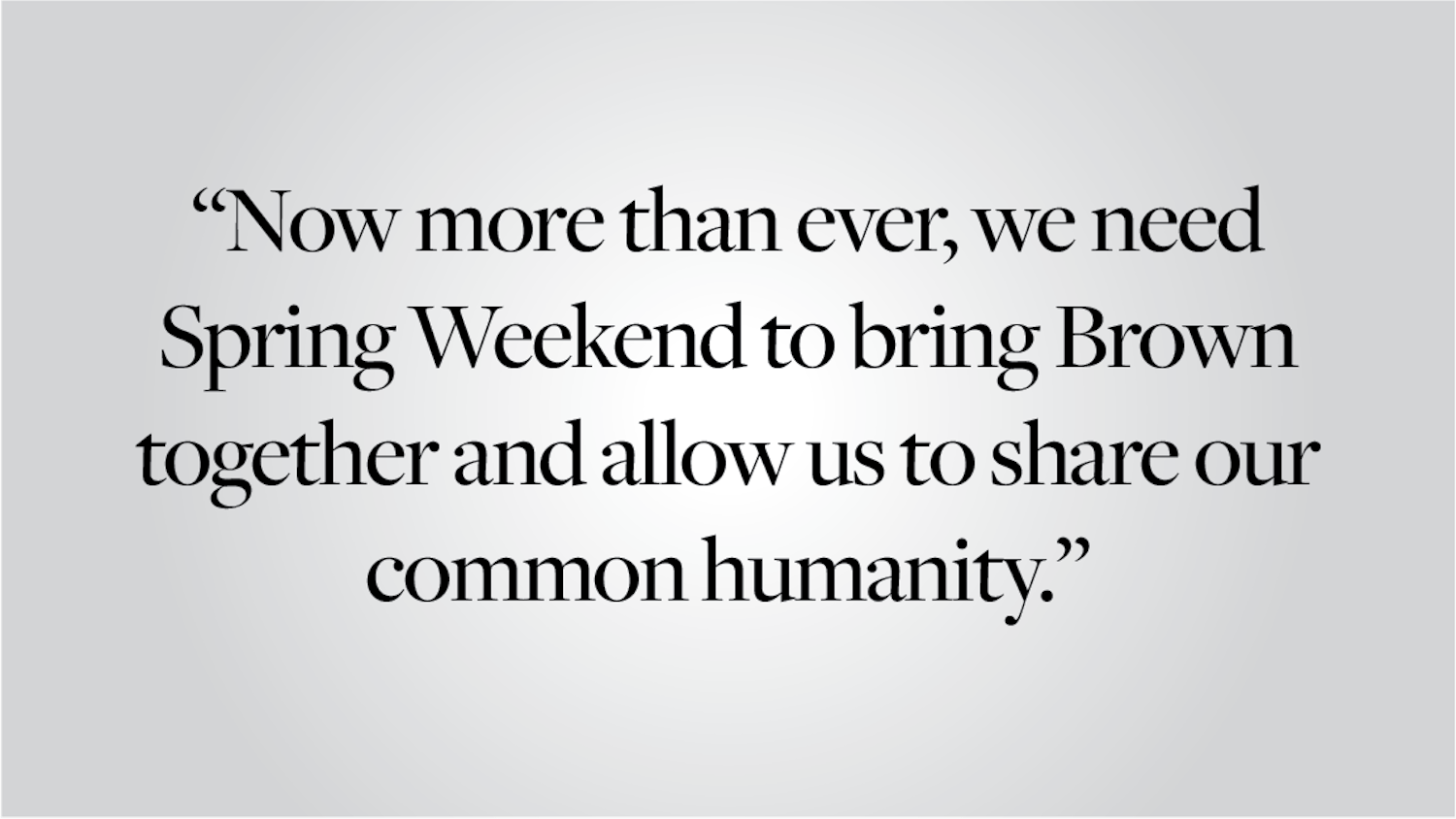It is always distressing to read an opinion piece (“Stop overvaluing Brown athletics,” Mar. 24) from a non-athlete who likely has little to no interaction with Brown’s athletic domain. It is especially upsetting to read such a response from a first-year who has even more limited exposure to the impact that athletics have not only on athletes themselves, but also the University as a whole and the community that the University represents. Therefore, I contest the claim that Brown athletics are overvalued; on the contrary, I contend that the impact of sports at the school is truly undervalued.
Inevitably, there will be a chorus of readers who will dismiss this response because I was a four-year varsity athlete. As the argument will go, “He wore the brown, cardinal and white. Therefore, he is a shill for the Athletics Department.” In reality, this assumption could not be further from the truth. I have had more than my fair share of disagreements with the Athletic Department’s treatment of certain sports, especially my sport of swimming and diving.
Regardless of my differences with the athletic department, I ask you to put yourself in the shoes of a student-athlete applying to Brown during their senior year. They spend many years preparing for this moment, when the culmination of academic success in high school combines with thousands of hours on the field, in the pool or on the court. This conscious decision to apply to Brown or any other Ivy League institution means that the student voluntarily forgoes potential scholarship money that could and would have been provided by another school in order to represent their school as a student-athlete. Nearly every student-athlete with whom I interacted over my four years at Brown had offers from state schools, Patriot League universities or other institutions that were willing to reduce or eliminate tuition for the student in return for dedication to their sport. Brown athletes eschew these scholarships in pursuit of a more academically rigorous four years while representing the university they love.
While these student-athletes essentially compete “for free,” rather than costing Brown millions of dollars in athletic scholarships, Ivy League athletics provide a level of exposure to the University that is undervalued. If you tuned into ESPN last weekend as I did, you might have noticed that in the live coverage of the NCAA hockey tournament, the familiar Brown logo was visible on the boards as well as in the center of the ice at the Dunkin’ Donuts Center. Additionally, every camera zoom on the nets at the venue made a pitch for “Brown Hockey.” This exposure does not even account for the amount of revenue that the event brought to Brown, Providence and Rhode Island as a whole.
Owen Colby ’20 also writes that “support for athletes and attendance at games … would likely be enhanced in a school where teams are composed of largely walk-on and non-recruited athletes.” If he can find hundreds of students at Brown who will commit to giving up over 30 hours a week (because let’s be honest, the 20-hour limit set by the NCAA does not include prehab, rehab, traveling to practices and training) to fill team rosters, I am willing to entertain his proposal. If Colby can weave through the maze of Graduate Center Bar on any given night (especially a Friday) and ask students to go home to prepare for a 5 a.m. practice the next morning rather than having another beer, I am supportive of his efforts. If he is willing to ask students to deprive themselves of both sleep and study time for practice while still being expected to perform at the same academic level as their peers, I can get behind the walk-on model.
In this vein, Colby argues that student-athletes do not deserve to attend Brown because of lower academic admission standards. But if this is the case, distribution for class grades should follow an oil and water relationship. Do non-athletes rise to the top in terms of academic performance with student-athletes consistently falling below their peers? The truth is that student-athletes compete on the same academic plane as their counterparts — and succeed.
Additionally, I fail to see how student-athletes are the only people being given some sort of “alteration” in the admission process by factoring in an applicant’s high school extracurriculars. There are over 30,000 applicants to Brown. Does every admitted student have a perfect 4.0 GPA and a 36 on their ACT, or does the University accept some students who do not reach these pinnacles of academic excellence? Is the award-winning high school trumpet player who had a 3.7 and 34 on his or her ACT not given a leg-up over the student who studied for those perfect marks to pad his Ivy League applicant resume? If Colby can put forth a perfectly merit-based system at Ivy League institutions in which students are selected strictly by higher education qualifications, regardless of extracurricular emphasis, I would suggest he propose that arrangement as his national standard for higher education.
Do we not, as a university and a society, want to promote well-rounded graduates who are more than just bookworms? If our goal is to foster the development of unidimensional students and humans, I will concede every point made by Colby that athletics at Brown are a drain on the University. But an examination of the alumni base at Brown will demonstrate many success stories of students who were passionate about, and talented in, non-academic endeavors. Examples include John Krasinski ’01, Emma Watson ’14, John Heisman and Chris Berman ’77 P ’08 P ’09— to name a few. There are even the stories of successful student-athletes at Brown who went on to achieve beyond the athletic realm, stepping into television, music and beyond (for example, Daveed Diggs ’04).
If one wants to make the argument that athletic outlays should plateau and not increase in this age of the shrinking budget and evolving goals of the modern university, I can begrudgingly concede to that middle ground. But there is no world in which I can see Brown benefiting from decreased support for athletics. Do national championships in crew not count as athletic “success”? Does reaching the Final Four in lacrosse not meet the standard that an Ivy League institution should set for athletic prowess?
As a former student-athlete at Brown and proud graduate, I am slightly offended that the four years my teammates and I committed to Brown go unappreciated by non-athletes. The countless hours we devoted to both our sports and academics — with many of us attending graduate school as University record holders, Ivy League finalists, and NCAA qualifiers — seem to be in vain, as we are not viewed in the eyes of some as even deserving our initial acceptance to Brown. I will continue to advocate for Brown athletics, and I would ask that non-student-athletes respect, or at least recognize, the sacrifice that student-athletes make every day to represent the brown, cardinal and white. We student-athletes are Ever True, are you?
Chris Meyers ’16 can be reached at christopher_meyers@alumni.brown.edu. Please send responses to this opinion to letters@browndailyherald.com and other op-eds to opinions@browndailyherald.com.




